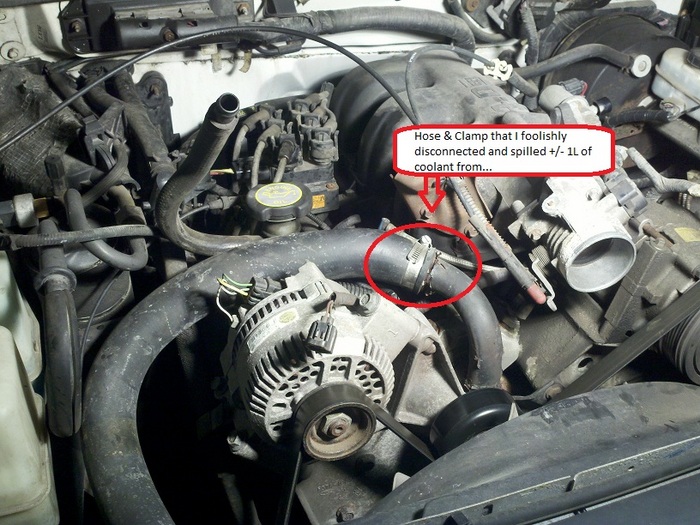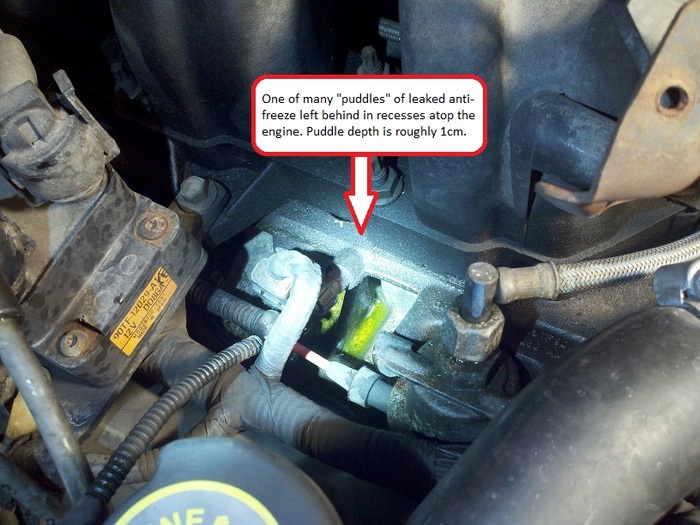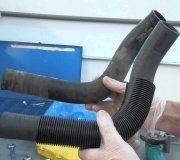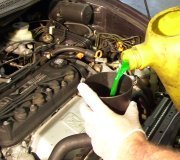I own a 1996 Ford Explorer XLT 4x4, 4.0l V6 w/ automatic transmission and 214,000 miles on the odometer. During my 6 mile drive home last night in 31* Fahrenheit temperatures, I smelled the strong odor of anti-freeze wafting from the engine compartment. When I pulled into my garage, I opened the hood and found a fine "splatter" of neon green (clean) coolant covering the ignition coil, firewall, and a portion of the hood insulation layer. (Just last week, I added a packet of Aluma-Seal Stop Leak and successfully sealed a slight coolant drip from a heavily corroded freeze plug. It may or may not be relevant, but it's information none the less.) While I am still in the process of diagnosing this new coolant splattering issue (as this is ironically not my question), I ran into a bit of a brain-dead moment during my after-drive inspection. At first, It looked as if the leak may have splattered from the rear of the 2" or so diameter upper radiator hose. Because the alternator's close proximity to where I felt the leak may be coming from, I loosened the hose clamp to remove the hose and inspect it for punctures or cracks. This proved to be an idiotic lapse in judgment for me, as I managed to pour a good liter of coolant out of this hose and directly onto the hot engine below. The hose turned out to be intact, and the clamp seemed to be in good shape, so I re-attached and tightened the hose, and returned all to its original state. However (sorry for the rambling background information) this brings me to the three-part question I'm hoping for an answer to.
1. Considering the fairly large amount of coolant I poured from a well-sealed hose, should I "burp" the cooling system before driving anywhere to remove whatever amount of air I may have trapped within?
2. If so, could you please give me a brief description of how to do this properly?
3. There are several "puddles" of coolant (due to my clumsy spill) nestled in various recesses atop the engine, many of which I have no way to dry with a towel or sponge. Is it safe to drive/run the engine with coolant pooled like it is, and will the coolant evaporate once the engine has reached operating temperature?
SPONSORED LINKS
Friday, February 25th, 2011 AT 6:49 AM






